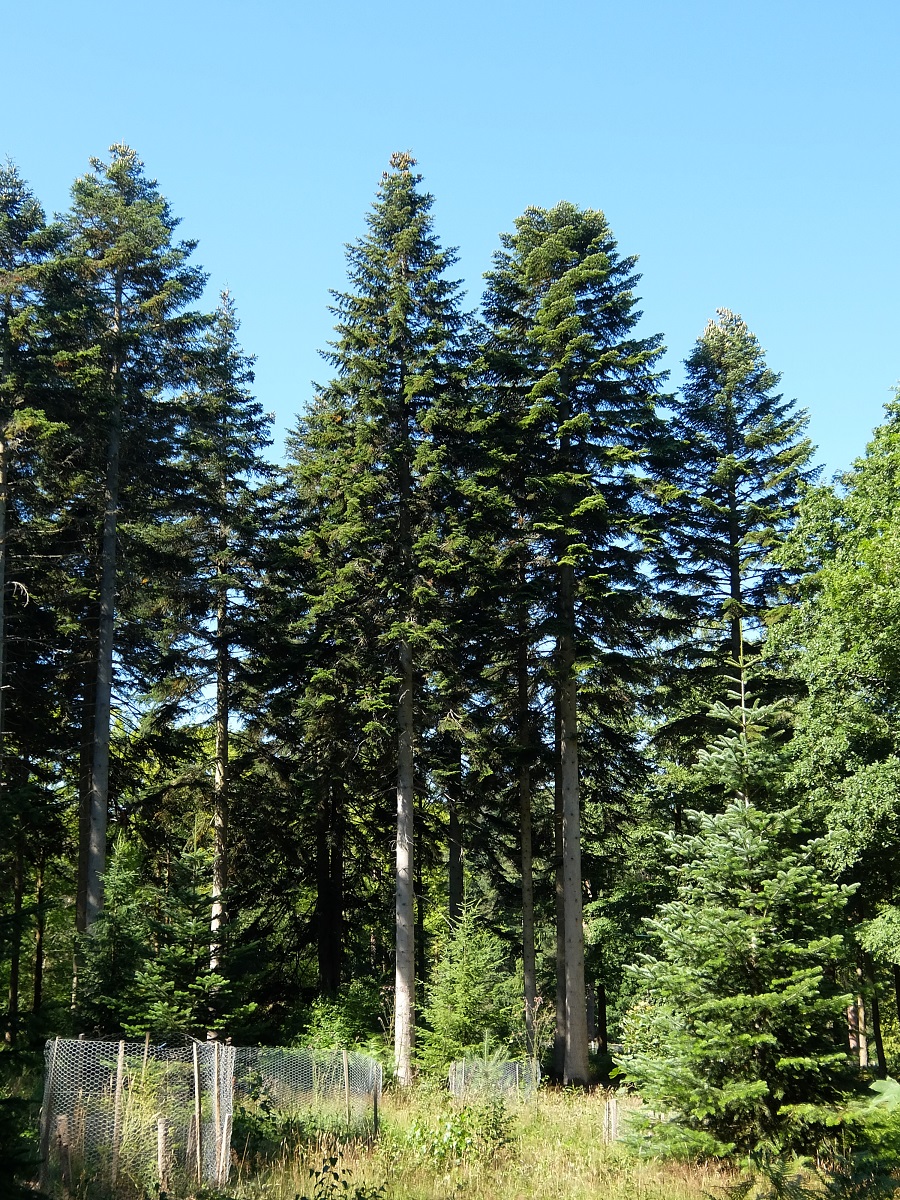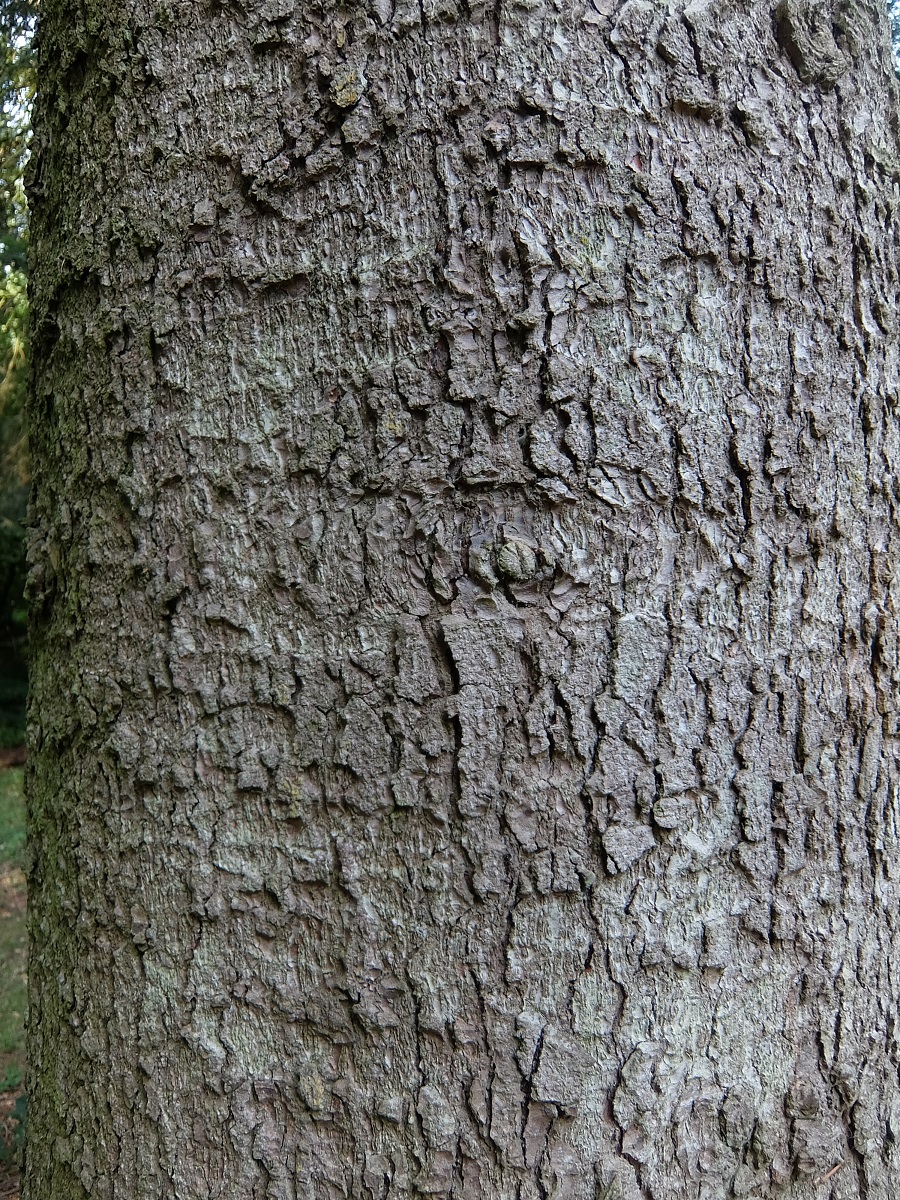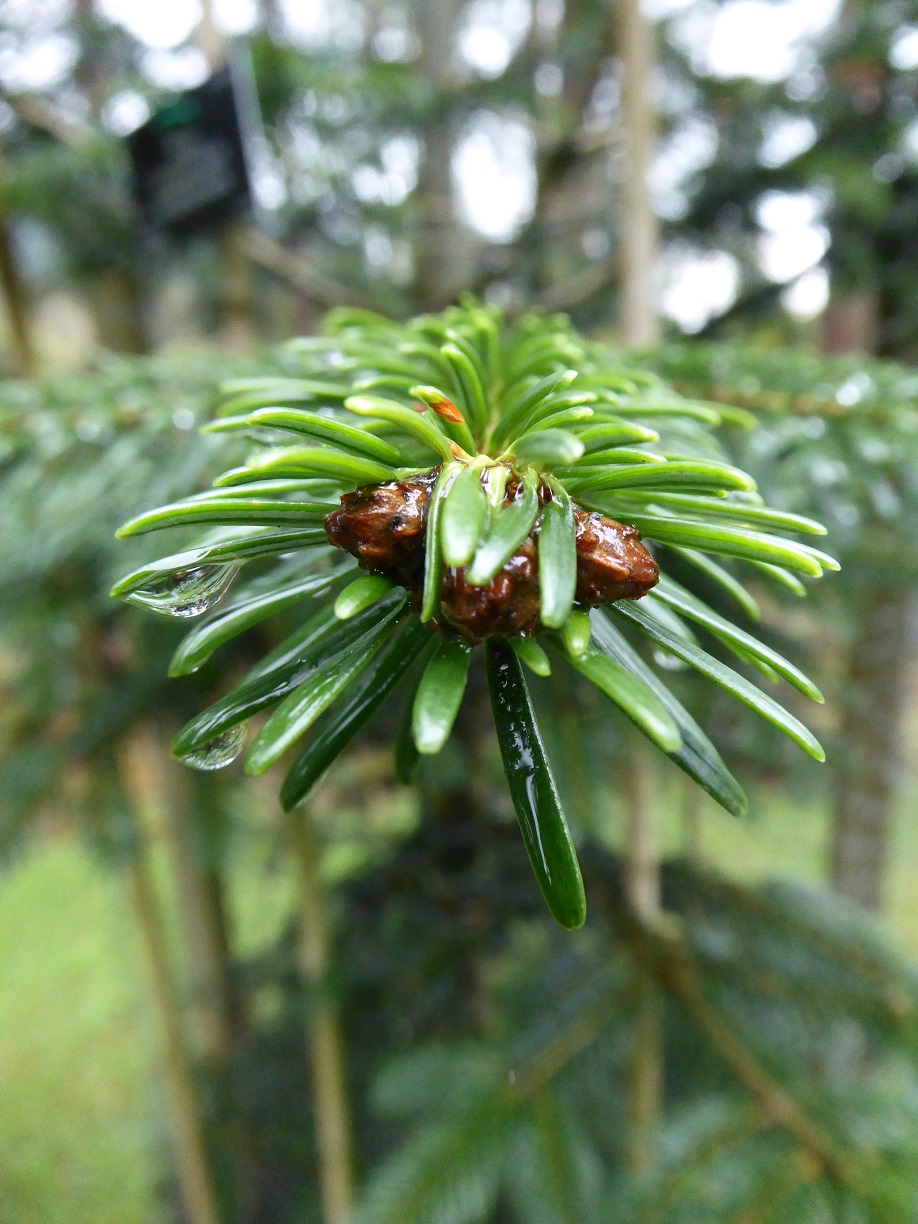Caucasian fir, Nordmann fir (NMF)
Caucasian fir is better known by its other common name Nordmann fir. It will also be familiar to many as a popular Christmas tree that retains its needles. It was a late introduction to Britain (1848) and has received little attention as a species for forestry. This may have been due to the focus on the faster growing firs from the Pacific northwest and the better known and earlier introduced European silver fir (Abies alba).
A species that can grow to a large size in Britain reaching heights of > 48 m under suitable conditions. There are few research trials, and most trees are found as specimens in Botanic Gardens. Caucasian fir is a species that requires further research and current indications are it appears to tolerate a range of soils and climatic conditions that could give it a limited niche in forest diversification.
Caucasian fir is categorised as a plot-stage species which has demonstrated some positive silvicultural characteristics at the Specimen-stage and are now subject to further testing and development in a limited number of trial plots.






Range
Native to the western Caucasus Mountains and to mountainous areas of the Black Sea region of northern Turkey where it grows at elevations ranging from 900 up to 2100 m. The populations found in the central and western parts of the Turkish range have previously been considered as separate species (Abies bornmuelleriana and A. equi-trojani) but are now generally accepted and combined into one subspecies of Caucasian fir, Abies nordmanniana subsp. equi-trojani.
Provenance Choice
No provenance testing of this species has been carried out in Britain. There are few forest plots in Britain, so seed should be sourced from the natural range.
Site Requirements
Limited evidence suggests the species is probably best suited to areas of >900 mm rainfall in western Britain. It is cold hardy throughout Britain. Does not tolerate exposure, so freely draining soils on valley sides should be preferred. Best suited to poor to rich soils and of slightly dry to moist soil moisture status. It does not tolerate peats or nutritionally very poor soils. Subspecies equi-trojani is reported to make reasonable growth on alkaline soils while European studies have found that the subspecies is also more drought tolerant than other Abies species.
Further detail on the site requirements of Caucasian fir in current and future climates can be examined using the Forest Research Ecological Site Classification Decision Support System (ESC).
ECOLOGICAL SITE CLASSIFICATION TOOL
Silviculture
Caucasian fir is a shade tolerant species which often grows in mixed forests in its natural range with other conifer and broadleaved species e.g., black and Scots pines, oriental spruce, and oriental beech. However, nearly pure stands are also found in favourable growing conditions. Both selection and shelterwood silvicultural systems are used for managing these forests.
There is little information on the best nursery methods for growing this species, so practice should be similar to that used for Abies alba. Growth in the early years is often slow, and the species can be vulnerable to frost damage and to browsing by deer. Canopy closure is likely by 20-25 years and subsequent growth will be steady. In Britain, in the few long-term plots with Caucasian fir yield classes of 14-16 m3 ha-1 yr-1 have been achieved suggesting an even-aged rotation of 55-70 years. However, both the shade tolerance of the species and management practices in its natural range suggest that it would be well suited to continuous cover forestry. Evidence from limited trials in continental Europe indicate that establishment, growth and performance appear little different from that of European silver fir (Abies alba).
The limited evidence under British conditions would indicate that Caucasian fir is unlikely to outperform other silver firs (e.g., A. grandis, A. amabilis, A. alba) on suitable sites. Most plants of this species grown in Britain are used for Christmas trees and this is likely to remain the major use unless the reputed greater drought tolerance of certain subspecies means that it is used for diversifying conifer forests in eastern Britain.
Pests and Pathogens
Caucasian fir can suffer from infestations by the silver fir adelgid (Dreyfusia nordmannianae), which causes shoot distortion, and Balsam woolly adelgid (Adelges piceae), which can cause dieback with severe infestations. Conifer root and butt rot (Heterobasidion annosum) and closely related Heterobasidion abietinum has been recorded on this species in some European countries.
See our other tools and resources
Further Resources
External
In addition to the general sources of information for species the following are useful for Caucasian fir.
Caudullo, G., Tinner, W., 2016. Abies – Circum-Mediterranean firs in Europe: distribution, habitat, usage and threats. In: San-Miguel-Ayanz, J., de Rigo, D., Caudullo, G., Houston Durrant, T., Mauri, A. (Eds.), European Atlas of Forest Tree Species. Publ. Off. EU, Luxembourg, pp. e015be7+
Savill, P., Wilson, S.McG., Mason, W.L., and Jinks, R. (2016) Silver firs (Abies spp.) of Europe and the Near-East: species, silviculture, and utilisation potential. Quarterly Journal of Forestry, 110, 16-27.




